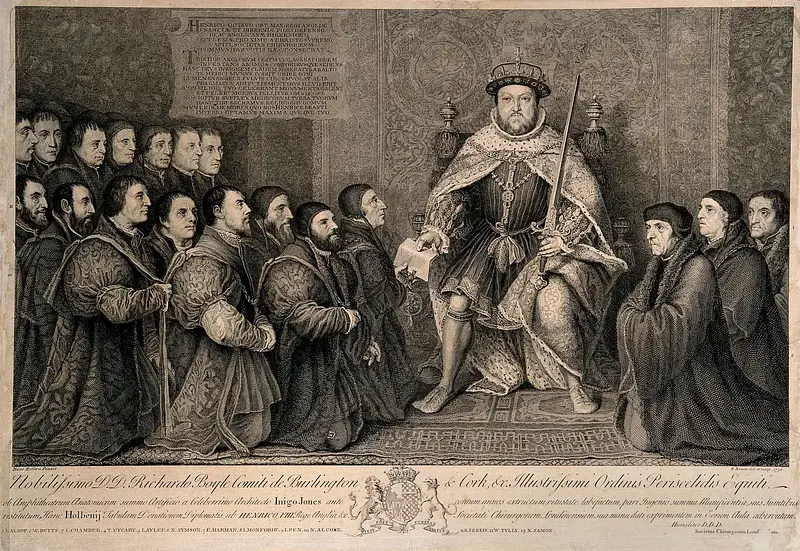With some of the most well-known characters in the history of the English monarchy, the Tudor dynasty is one of the most significant royal houses in the history of the UK.
The Tudor Family Tree marked History through the figures who sat on the English throne, from Henry VII, founder of Tudor England, right through to the formidable Queen of England, Elizabeth I, changing and shaping the end of the Middle Age through:
- Political and religious overhauls
- Wars and victories
- Rebellions and coups
- Culture development
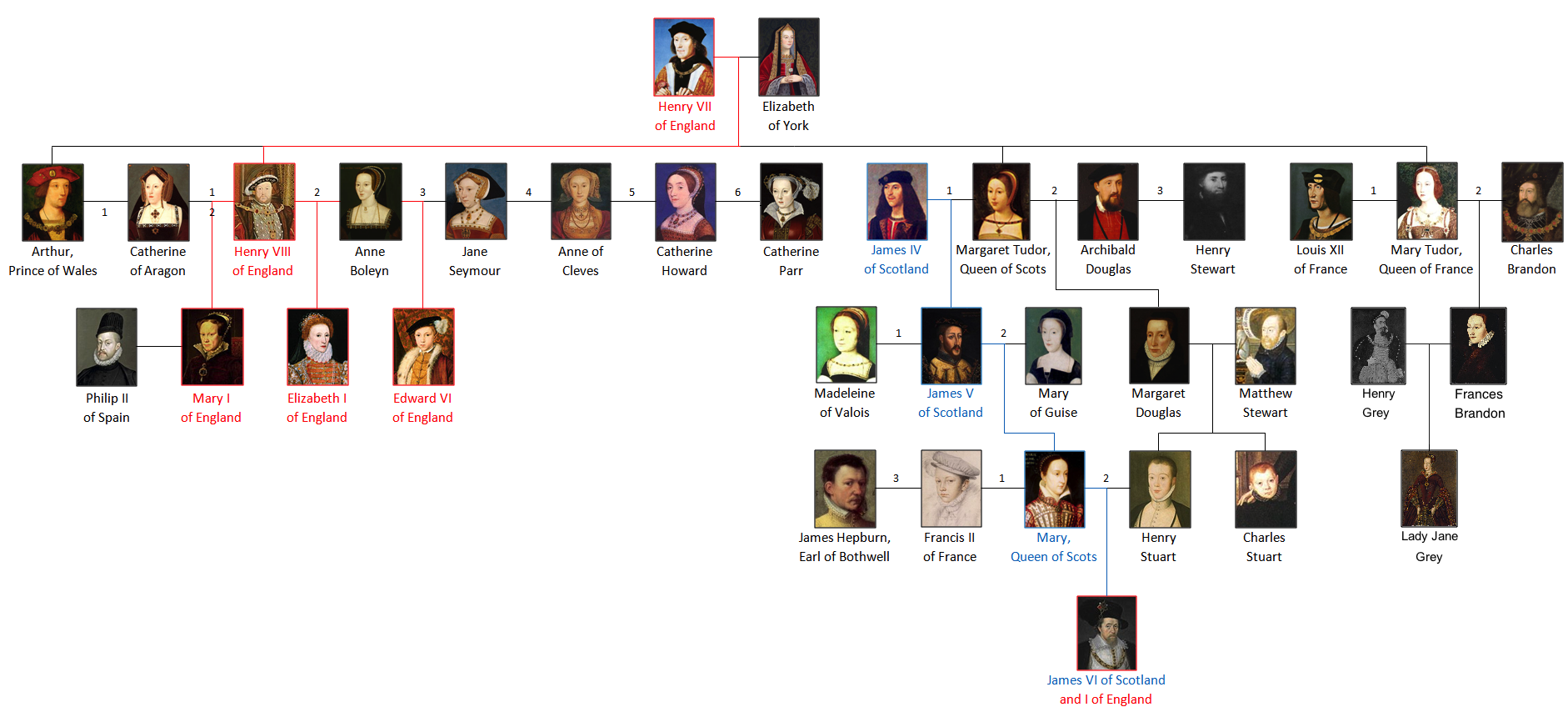
From Thomas Wolsey and Thomas Cromwell to the Duke of Northumberland, Mary, Queen of Scots, and Anne Boleyn, it has some incredible characters too.
Here, we are going to do a survey of the Tudor times through the figures sat on the English throne, from good old Henry VII, founder of Tudor England, right through to the formidable Queen of England, Elizabeth I.
1485
Henry VII
Victory at the Battle of Bosworth Field
1509
Henry VIII
Ascension to the throne
1547 - 1563
Mid-Tudor crisis
1547
Edward VI
Ascension
1553
Mary I
Crowning
1558
Elizabeth I
Beginning of her ruling
1563 - 1603
The Golden Age
Cultural and economic flourishing
1603
Death of Elizabeth I
Continuity and unification of the crowns with James VI

Origins of the Tudor Dynasty
It's generally well known that the Tudor era began in 1485, when Henry VII, Henry Tudor, was crowned king. Henry was the only Lancastrian candidate to be king because all of those with a better claim had been killed during the war.
Here are a few historical details about the Tudor kings that may help to clarify your understanding of the Tudor reign.
King Henry VII: Henry Tudor (1485-1509)
The first king in the Tudor dynasty, Henry VII came to the crown through his victory at the Battle of Bosworth Field, the final battle in the thirty-year-long Wars of the Roses.
Although historiography has generally seen him as a bit of a boring bloke, there wouldn’t have been any Tudors at all if it wasn’t for him. He united the two parties that had been in conflict during the War of the Roses – the House of Lancaster and the House of York – after he came to power by marrying Elizabeth of York, himself a Lancastrian.
Policies, Reforms, General highlights of the ruling of Henry VII
He sought to secure the reign of his descendants through the marriage of his son Arthur to Catherine of Aragon, with the Treaty of Medina del Campo and a clause in the Treaty of Perpetual Peace.
King Henry VIII (1509-1547)
Where his father is known for being someone a little too fond of money and of the administrative tasks of state, Henry VIII is remembered for being one of the most hedonistic and headstrong monarchs in the history of England. Thomas Cromwell, Henry's chief minister, was a key figure in implementing his religious policies (separation from Rome and the dissolution of the monasteries). Still, as his wives, he was also betrayed by the king.
Policies, Reforms, and general highlights of the ruling of Henry VIII
The Six Wives of Henry VIII
We can’t talk about Henry VIII without mentioning his wives, Catherine of Aragon, Anne Boleyn, Jane Seymour, Anne of Cleves, Catherine Howard, and Catherine Parr. ‘Divorced, beheaded, died; divorced, beheaded, survived’, as the rhyme now so famously goes:
Catherine of Aragon and her marriage to Henry VIII
- A cultured, tenacious woman with strong religious convictions, Catherine spoke English and Latin.
- At 15, she married Arthur, who sought to forge an alliance between England and Spain against France. Arthur died just a year later. As a result of diplomatic negotiations, she became very religious and eventually wed Henry in 1507. She was older; Henry was only 17.
- She suffered numerous miscarriages; only Mary (born in 1517) survived, and she would be the sole survivor.
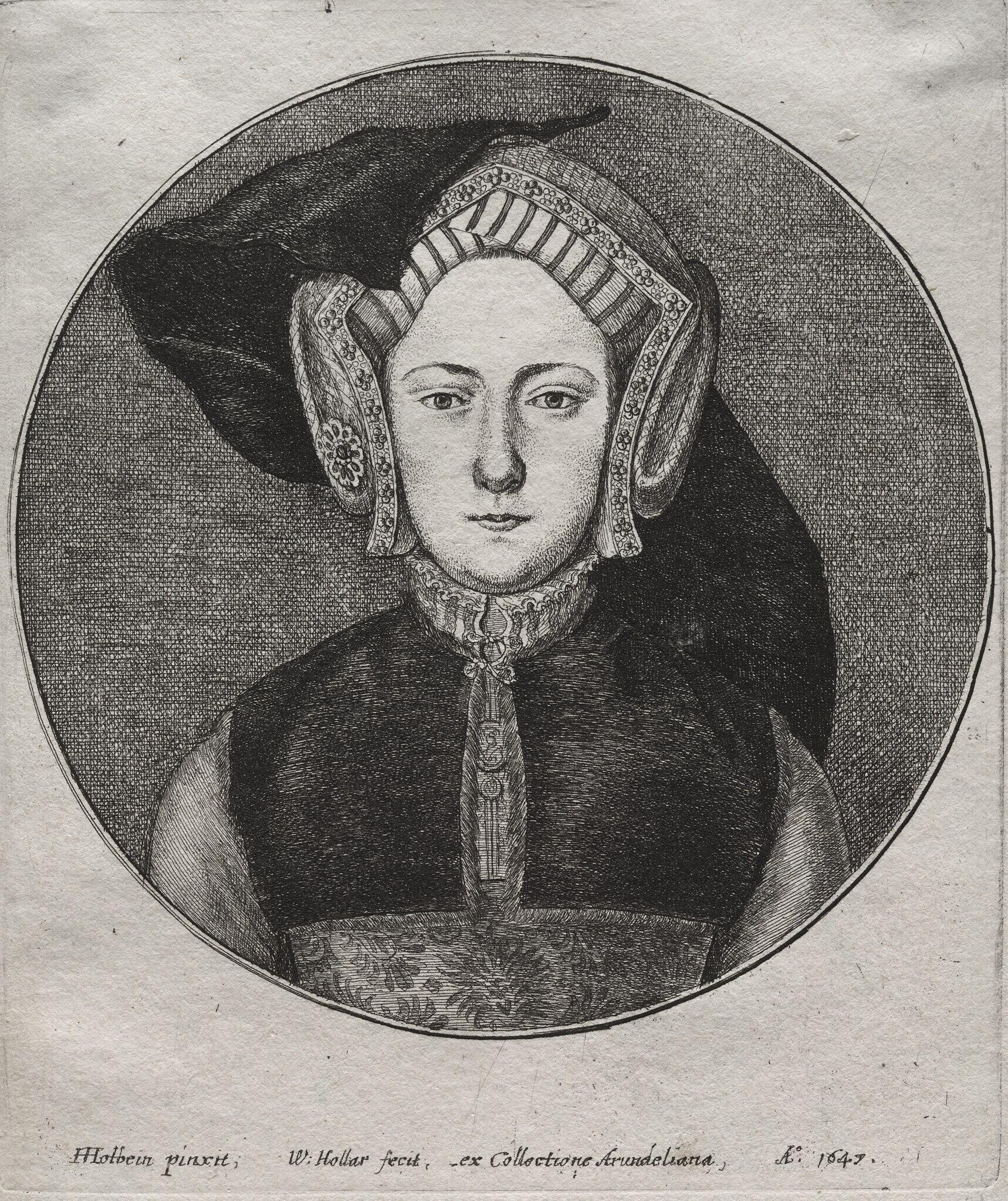
Henry wanted a male heir, so he sought a divorce, but Catherine (who had strong religious connections in Rome) defended the marriage, and Pope Clement VII denied the separation.
Thus began the English Reformation, when Henry proclaimed himself head of the Church so he could marry another woman, marking a turning point in the history of church-state relations. Catherine was separated from her daughter and exiled. She died in 1536.
Anne Boleyn
- A noblewoman who served at the court of Queen Claude of France.
- Henry VIII was still married to Catherine of Aragon when he courted Anne, and they married in secret in 1533, the same year their daughter, Elizabeth, was born.
- The first queen to be executed.
Although her relationship with Henry VIII developed rapidly upon her arrival in England, they separated only three years later.
In 1536, Anne was accused of adultery (with her own brother) and of conspiring against the king and was executed.
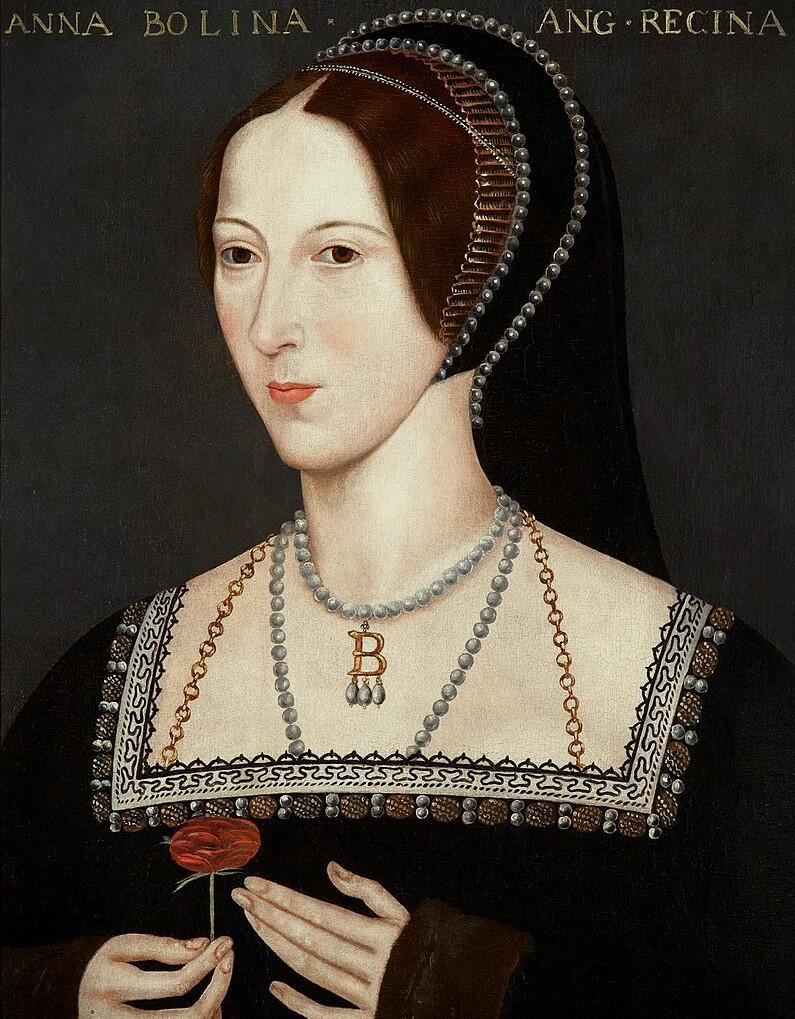
Jane Seymour
- Part of the courts of Henry's first wives, she differed from her predecessors, being a more discreet lady from a modest noble family.
- Henry chose to be buried next to her, demonstrating his affection for the woman who gave her a son.
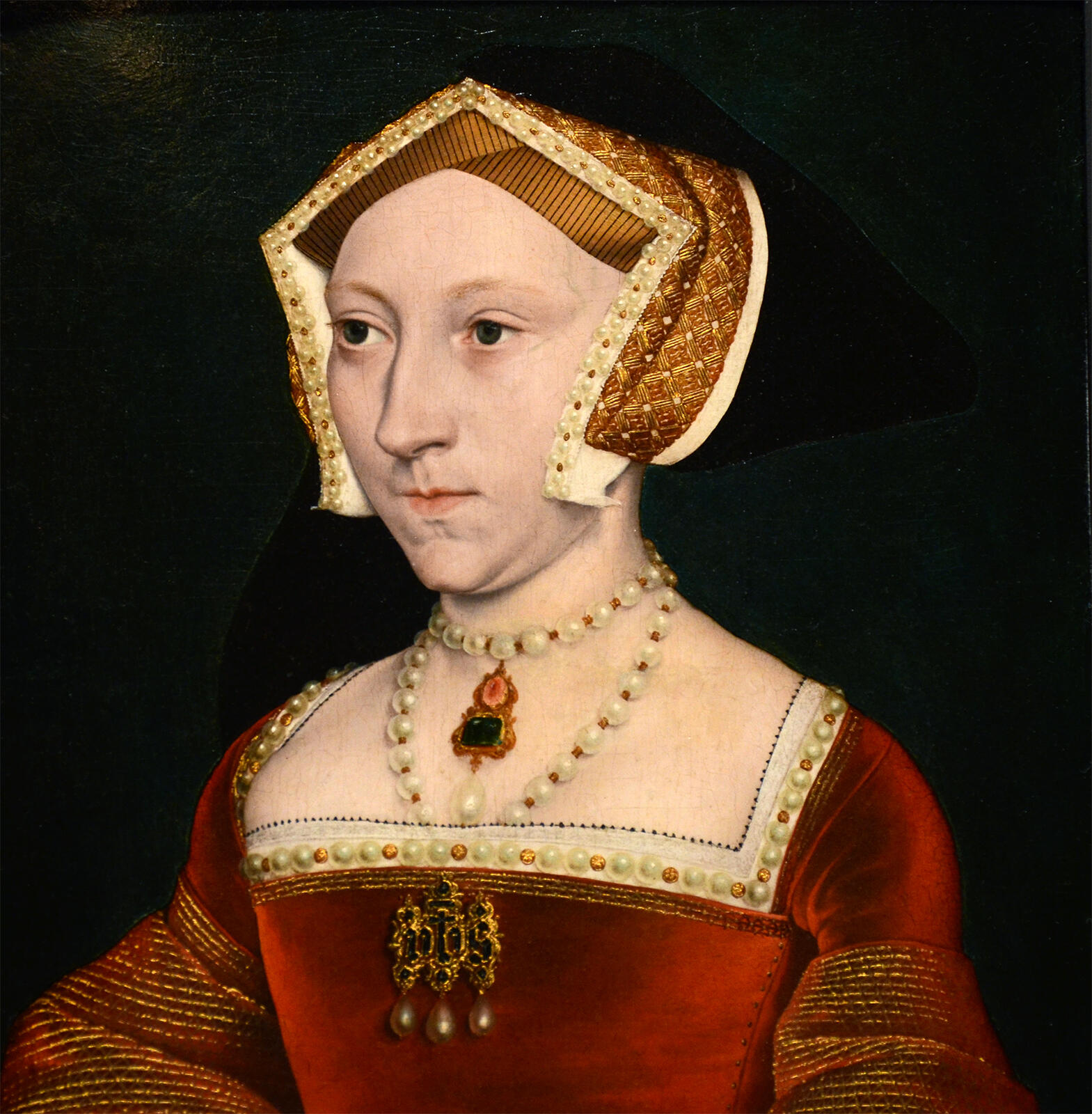
In 1536, less than two weeks after Anne Boleyn's death, she married Henry. Jane gave the king the first male heir, Edward I, but she died as a result of difficult childbirth.
Her life was short and unremarkable, but it changed the course of the dynasty.
Anne of Cleves
- Her family (of German origin) had good political connections, so Henry saw her as a good alliance, but he considered her unattractive.
- They married in March 1540, but the marriage was annulled a few months later, although they maintained a cordial relationship and even received a pension from Henry VIII.
- She died in 1557 and was buried in Westminster Abbey
Cromwell arranged Henry's marriage to Anne of Cleves (who had convenient political connections in Germany), but the governor felt deceived because she was not to his liking.
In 1540, Henry decided to execute Cromwell for treason. The execution took place on the day of his wedding to his new conquest, Catherine Howard.
Catherine Howard
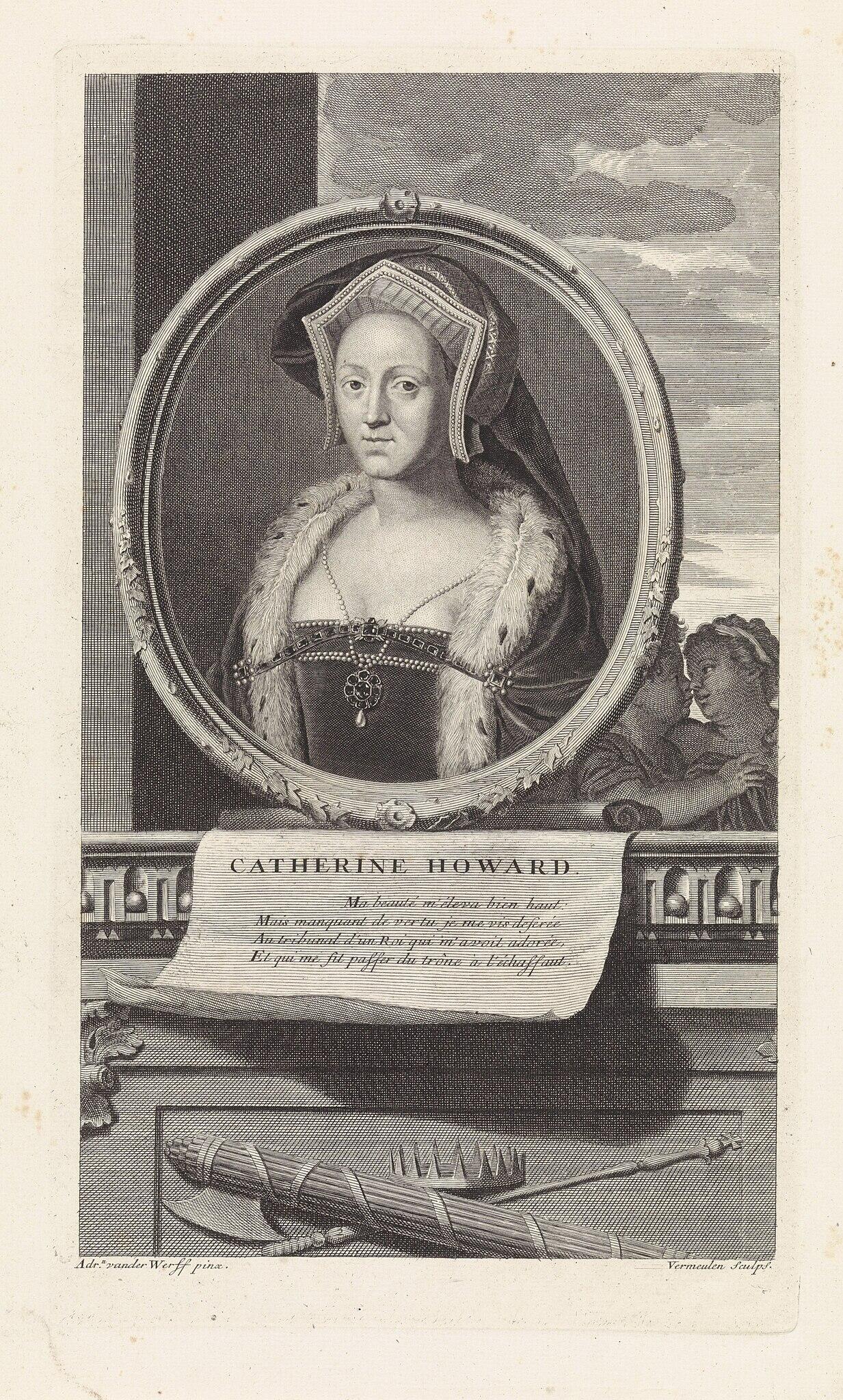
Anne Boleyn's cousin, she met Henry in 1540, when he was already in poor health and she was still a teenager. They married the same year as his fourth divorce, but she only lasted a year and a half on the throne because she was accused of having been betrothed before marrying Henry.
Furthermore, letters with her lover, Thomas Culpepper, were discovered, which were taken as proof of adultery and led to her divorce. In 1542, she was imprisoned in the Tower of London, where she was executed.
Catherine Parr
- Twice widowed, she was the first queen to publish religious books, as she was a cultured dame on the subject.
- Married in 1543, she was the last companion of Henry VIII and his children (Mary I, Elizabeth I, Edward VI), whose upbringing she greatly influenced.
- Her religious convictions were seen as a threat by some members of the court, who accused her of heresy, although she persuaded her husband not to sign the arrest warrants.
- After Henry died in 1547, she married Thomas Seymour (brother of Jane Seymour, Henry's third wife), and they had a daughter, but she died of an infection after childbirth.
These were the women who tried to bear the king’s heirs – and to bear Henry himself, although in a slightly different way.
| Henry VIII's Wife | Marriage - End | Fate of the Marriage | Children |
|---|---|---|---|
| Catherine of Aragon, born in Alcalá de Henares, Castile (1485 - 1536) | Married: 11 June 1509 at Greenwich. Marriage annulment: 23 May 1533 | Marriage annulled by Henry; Catherine banished to Kimbolton Castle; died 7 Jan 1536. | Mary I (1516 – 1558). Later Queen of England from 1553 – 1558. Mary I had several stillbirths and infant deaths. |
| Anne Boleyn born in Norfolk, England (1501 – 1536) | Married: 25 January 1533 in secret. Executed: 19 May 1536 | Accused of adultery and treason; executed at Tower of London. | Elizabeth I (1533 – 1603) — later Queen of England (r. 1558 – 1603). |
| Jane Seymour, born in London (1508 – 1537) | Married: 30 May 1536 at Whitehall Palace. Died while giving birth: 24 October 1537 | Died 12 days after childbirth (post-partum infection). | Edward VI (1537 – 1553) — later King of England (r. 1547 – 1553). |
| Anne of Cleves born in Düsseldorf, Germany (1515 – 1557) | Married: 6 Jan 1540. Marriage dissolution: 9 July 1540 | Marriage annulled for non-consummation; she remained in England with title “The King’s Beloved Sister”. | Didn't have children with Henry |
| Catherine Howard born in London, England (1523 – 1542) | Married: 28 July 1540 at Oatlands Palace. Executed: 13 February 1542 | Executed for adultery and treason; cousin of Anne Boleyn. | Didn't have children with Henry |
| Catherine Parr born in London, England (1512 – 1548) | Married: 12 July 1543 at Hampton Court Palace. Widowed: 28 January 1547 | Survived Henry; later married Thomas Seymour; died 5 September 1548. | No surviving issue with Henry VIII.She had a daughter (Mary Seymour, 1548–c. 1550) by Thomas Seymour. |
King Edward VI (1547-1553)
When Henry VIII died in 1547, his son, Edward VI, was only ten years old, not a great age to become king, and not a great recipe for monarchical stability.
Policies, Reforms, and general highlights of the ruling of Edward IV
📚 Somerset's protectorship:
- Edward Seymour, Duke of Somerset (his uncle and his mother’s brother)
- Introduction of the Book of Common Prayer 🙏🏻
- The protectorship of Somerset ended in disaster, marked by financial ineptitude, endless wars, and a series of rebellions that rocked the country.
- The Duke of Somerset was overthrown and ultimately executed in 1552. 🗡️
⚜️ Northumberland's protectorship:
- Northumberland was central in the plot to remove Somerset.
- His reforms aimed to diminish the power of the Catholic Church by reclaiming the wealth of the parish churches, which were melted down for bullion and sent to the Royal Mint to fund the government.
- Attempted to exclude Mary Tudor and Elizabeth Tudor (Edward's half-sisters) from the throne by declaring them "illegitimate" to favour Jane Grey, granddaughter of Henry VIII's little sister (Mary, Duchess of Suffolk).
The Book of Common Prayer marked another turning point in English religion. Written in English and replacing the Latin liturgical texts, it emphasized principles of Protestantism, denying the existence of purgatory, eliminating prayer to saints, and questioning the sacrament of penance.

Jane Grey (1553)
Lady Jane Grey is perhaps one of the most tragic figures in the whole of English royal history, being used merely as a pawn in a game of power.
Queen Mary I (1553-1558)
Daughter of Catherine of Aragon, Henry’s first wife, she was also the cousin of Charles V, the Holy Roman Emperor and King of Spain. Despite Edward’s IV best efforts, Mary Tudor, ascended to the throne in 1553. And, for the Protestants in England at the time, her reign was not a very happy five years.
A devout Catholic, she immediately began overturning the Reformation measures; she reversed all of Edward’s religious laws - and many of Henry’s too.
Policies, Reforms, and general highlights of the ruling of Mary I
Despite her marriage to Philip, she did not bear any children – and her reign ended when she died in 1558. Her opponents widely celebrated the accession of her sister Elizabeth to the throne.
Queen Elizabeth I (1558-1603)
According to the law passed by Henry VIII, Elizabeth, the daughter of Anne Boleyn, was to be queen if Mary did not have any heirs... and this is precisely what happened.
Elizabeth, considered the best Tudor monarch, is also known for never choosing a husband, instead dedicating herself to her reign. With a group of trusted advisors and a strong navy – including many piratical elements – she slowly developed English power in Europe and on the high seas.
Being the daughter of Boleyn (a devouted catholic), Elizabeth's religious concerns leaned towards Protestantism. And so, after the reaction of Mary’s catholic reign, Elizabeth reinstated many of the reforms passed by Edward.
Policies, Reforms, and general highlights of the ruling of Elizabeth I

The Golden Age was characterized by increased literacy (more schools than offices were built, leading to the evolution of university education) and a flourishing of culture (playwrights William Shakespeare and Christopher Marlowe, as well as philosopher Francis Bacon, lived during this period).
Elizabeth's reign enjoyed a robust economy, an expansive outlook, and an optimistic future, but this Tudor era was also a turbulent time. There were wars, uprisings, and egregious raids on states' coffers.
Elizabeth I defeated the Spanish Armada, led by her brother-in-law, Philip II (widower of Mary I), which attempted to invade England with over 150 ships. Spain complained of a constant blockade by England, which supported the Netherlands to prevent Spain from achieving a trade monopoly. Still, the main grievance stemmed from frequent English pirate raids on Spanish ships in the Americas.
Why did Elizabeth I order the execution of Mary, Queen of Scots?
- Having neither married nor had children, Elizabeth was constantly pressured by her social circles to produce heirs and had to contend with numerous plots to dethrone her.
- Several of these were orchestrated by her cousin, Mary, Queen of Scots (Henry VIII's grandniece), a devout Catholic, who was imprisoned in England and forced to abdicate the Scottish throne in favour of her son, James VI.
- Through the Babington Plot of 1586, Mary, Queen of Scots, was finally accused of high treason and executed in 1587.
The Tudor Succession and Legacy
Tudor history is marked by tragedy, intrigue, and betrayal, but no one can deny there is much to fascinate in the sixteenth-century House of Tudor. Political and religious overhauls, wars and victories, rebellions, coups, and culture, Tudor history has it all; take a look at how their actions shaped the end of the Middle Ages and the early modern age.
| Monarch | Personal Life | Policies / Reforms | Major Historical Events |
|---|---|---|---|
| Henry VII (1485-1509) | Born 28 Jan 1457, son of Edmund Tudor and Margaret Beaufort. Married Elizabeth of York in 1486 to unite Lancaster and York. | Consolidated royal finances and diminished over-mighty nobles; strengthened royal administration. | Won the throne at the Battle of Bosworth Field (22 August 1485) ending the Wars of the Roses. Also faced Yorkist pretenders (Lambert Simnel, Perkin Warbeck). |
| Henry VIII (1509-1547) | Born 28 June 1491; eldest surviving son of Henry VII. Married six times; known for his dynamic personality and court culture. | Broke with Rome and established royal supremacy over the Church of England; dissolved the monasteries; centralised royal power and reformed government structures. | Divorce of Catherine of Aragon and break with the papacy (1530s); Dissolution of the Monasteries (1536-41); Pilgrimage of Grace rebellion (1536). |
| Edward VI (1547-1553) | Became king aged nine on the death of his father; physically frail but intellectually precocious. | Under the regency of his Protector(s), the Church of England moved to a more explicitly Protestant form: introduction of the Book of Common Prayer (1549) and further reforms of liturgy and clergy. | Battle of Pinkie Cleugh (1547) against Scotland; economic and social unrest (e.g., Kett’s Rebellion 1549) as part of the consequences of rapid religious change. |
| Mary I (1553-1558) | Born 18 Feb 1516, daughter of Henry VIII and Catherine of Aragon; first queen regnant of England. Married Philip II of Spain in 1554. | Restored Roman Catholicism as state religion; repealed Protestant legislation; revived heresy laws. | Wyatt’s Rebellion (1554); Loss of Calais to France (7 Jan 1558) |
| Elizabeth I (1558-1603) | Born 7 Sept 1533, daughter of Henry VIII and Anne Boleyn; never married (“Virgin Queen”). Received a Renaissance-style education. | Established the Elizabethan Religious Settlement (1559) via the Acts of Supremacy and Uniformity, creating a moderate Protestant Church of England; balanced royal power, Parliament and council. | Accession 1558; defeat of the Spanish Armada (1588); flourishing of culture (“Elizabethan Age”). |
James VI of Scotland, I of England
The Tudor lineage didn't technically end with Elizabeth's death. Through the line of Margaret Tudor (Henry VII’s daughter and sister of Henry VIII), the lineage continued through James VI.
Whether you want it as just a general overview of the Tudor period, or a guide for your studies, this insight into the lives of the Tudor monarchs will be useful for anyone. We hope you enjoyed it!
References
- BBC Bitize. Learn: The Tudors (no date) Available at: https://www.bbc.co.uk/bitesize/topics/zwcsp4j (Accessed: October 2025).
- Encyclopedia Britannica. United Kingdom’s History: Edward VI. Authors: Paul R. Josephson, Peter Kellner. (29 October 2025) https://www.britannica.com/place/United-Kingdom/Edward-VI-1547-53 (Accessed: October 2025).
- The National Archives.Tudor Timeline. (No date) Available at: https://www.nationalarchives.gov.uk/education/resources/archives-live-tudors/archives-live-tudors-tudor-timeline/ (Accessed: October 2025).
- Rose Bennet’s Youtube Channel. Henry VIII and the six queens who marked his destiny. (14 September 2025) Available at: https://www.youtube.com/watch?v=YKWWp43yzmQ (Accessed: October 2025).
- Learning Academy Youtube Channel. Henry VII's Government | The Tudors | AQA A Level History. (5 October 2025) Available at: https://www.youtube.com/watch?v=piorlKco60s (Accessed: October 2025).

